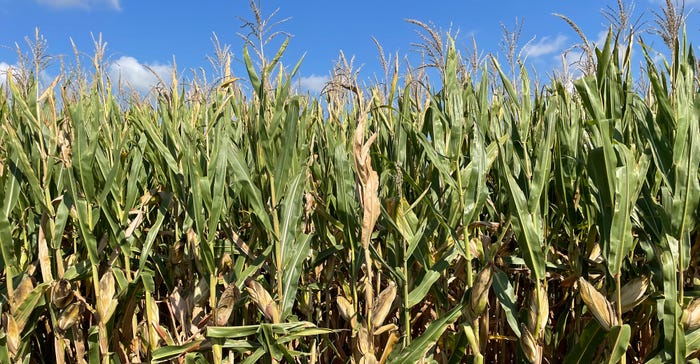March 31, 2022

Having the right tools to rid crops of diseases takes good management and knowledge of your fields. Iowa State University Extension field pathologist Alison Robertson says studying various crop diseases provides insight as to what conditions make those diseases thrive.
“Our goal is to determine how diseases develop, so we can forecast when they will be a problem, and find the best way to fight these diseases,” Robertson says. “The biggest disease threats for Iowa corn include gray leaf spot, northern corn leaf blight, tar spot and stalk rot. On the soybean side, it’s mostly soybean cyst nematode, sudden death syndrome and frogeye leaf spot.” The slideshow with this story illustrates the diseases named here.
Spot disease
The No. 1 driver of disease is weather, according to Robertson. This means it is possible to have different diseases in different parts of the state because of changes in climate. Since weather is not predictable, the National Prediction Modeling Tool Initiative has studied different methods for dealing with diseases. The studies look at diseases from all angles and all factors.
The group is working with the National Agricultural Genotyping Center to determine how diseases develop. With new and different cropping systems or practices comes varying disease pressure.
And when the groups study disease in small-scale plot trials, they collect data and develop models. Then they can validate results on a bigger scale.
Residue often holds the key. Robertson says less tillage means more residue, which they can collect from across the state to determine postharvest disease presence. “We look at the residue, because that is where the first spores are present to develop into disease the following year.”
If they discover a high likelihood of a particular disease, then the farmer can select a hybrid or variety for the next year that’s resistant to the disease.
Spore traps can also be used to collect spores to know what kind of disease pressure is present in a particular field. Collecting residue can also show results. While the plants are still standing in the field, ear leaves can be collected — two above the ear and two below the ear. This will show how much disease is present in the plant. Robertson says collecting samples throughout the field will give a better idea of disease pressure overall.
Manage disease
“The cornerstone of disease management is a resistant hybrid or variety. Since diseases will change from year to year, this takes a lot of studying by the farmer,” she says.
Disease reduction could be seen by taking timely preventive actions such as selecting the right seed, using appropriate planting populations, providing plants with adequate nutrition, using crop rotation and applying fungicides when needed.
“Diseases will change year to year, which is why it is so important to know what is present in your fields,” Robertson says. “Sensitivity to disease can change as growth continues. And weather is a main factor. Since we have seen dry conditions across the state, it could lead to less disease problems this year.”
She says studies do show the value of crop rotation, and how less residue can prevent disease problems. Yield loss can increase if the disease is not treated at the proper time. If fungicides are sprayed too early, it may not help with control. Pathogens are known to survive on corn residue and can even blow in from other areas or the next field over.
Various ISU research farms across the state show a decrease in yield due to disease pressure on fields of continuous corn, versus those with a corn-soybean rotation.
“Seed companies continue to work on disease-resistant hybrids. Pathologists are concerned about hybrids that yield well and if those will have a higher susceptibility to disease,” Robertson says. “Our work is not done. Finding the genes needed to help fight disease and getting them into the seed is a priority.”
Scout disease
Tar spot has been a problem more recently across Iowa. Scout and watch weather to determine fungicide application in July or August. You can even detect some spores as early as June.
Spores can move in the air, but they must land on the susceptible hybrid and have seven hours of dry leaves to attach and reproduce. Green plant diseases could skip from one organism to another. Studies show that tar spot inoculation happens in two weeks, and a full-blown epidemic infection of the field can occur in four to six weeks.
About the Author(s)
You May Also Like






